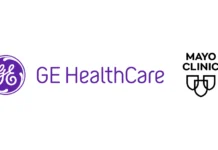Analysing exhaled breath using an artificial sensory system, the electronic nose (eNose), has enabled researchers to accurately differentiate between those interstitial lung disease (ILD) and healthy controls.
The eNose compares exhaled breath to previously obtained specific breath ‘signature’ for a particular condition held in a database.
Researchers from the Erasmus Medical Centre, The Netherlands, undertook a cross-sectional study in 322 patients with a diagnosis of ILD patients and 48 healthy controls with a mean age of 61.6 years (59.9% male), of whom, 5.3% were current smokers.
The eNose is first ‘trained’ to recognise ILD breath signatures of those with the condition the ILD subgroups, for example, idiopathic pulmonary fibrosis (IPF), sarcoidosis, connective-tissue related ILD etc. Researchers then compared the area under the curves (AUCs) results obtained from the training phase to the breath samples obtained from the study patients. The results showed a high level of comparability between the study patients and the breath signatures obtained through training the eNose. For example, in the training phase, the AUC for patients with IPF was 0.91 compared to other subtypes and 0.87 (95% CI 0.77–0.96) in the testing phase.
The authors concluded that using the eNose represents a potentially novel biomarker in ILD, which enables diagnosis of the condition and the different ILD subgroups.


















